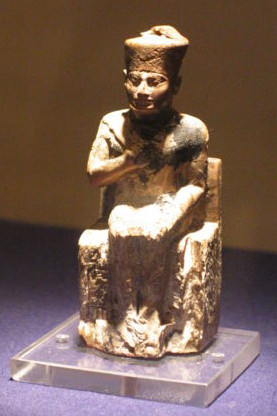Facts About Khufu Statuette
The Khufu Statuette, also known as the Ivory Figurine of Khufu, stands out as a remarkable piece of ancient Egyptian art. It depicts Khufu, a Pharaoh of the Fourth Dynasty renowned for constructing the Great Pyramid. Discovered in 1903 by Sir William Matthew Flinders Petrie at Abydos, Egypt, it remains the only largely intact three-dimensional representation of Khufu.
Intriguingly, the statuette's creation date has sparked considerable debate. Although many scholars argue it originates from the Old Kingdom, the eminent Egyptologist Zahi Hawass has proposed that it might date to the 26th Dynasty. Furthermore, the statuette's original purpose is still shrouded in mystery. Was it part of a statue cult, or perhaps a votive offering? The true function remains uncertain.
Measuring approximately 7.5 cm in height, the statuette depicts Khufu seated on a throne, adorned with the Red Crown of Lower Egypt. Initially discovered headless, the head was later located and reattached, restoring the piece to its complete form. Today, this captivating artifact is on display in the Egyptian Museum in Cairo.
The circumstances surrounding its discovery have cast doubts on its true age. While many Egyptologists support the Old Kingdom origin based on stylistic features and throne design, Hawass has suggested that it could be a later reproduction, citing unusual features and the context of its discovery.
This ongoing debate about the Khufu Statuette underscores critical questions regarding its authenticity, age, and purpose. It provides valuable insight into ancient Egyptian art, culture, and religious practices, making it an invaluable piece for historians and enthusiasts alike.

 Libya
Libya